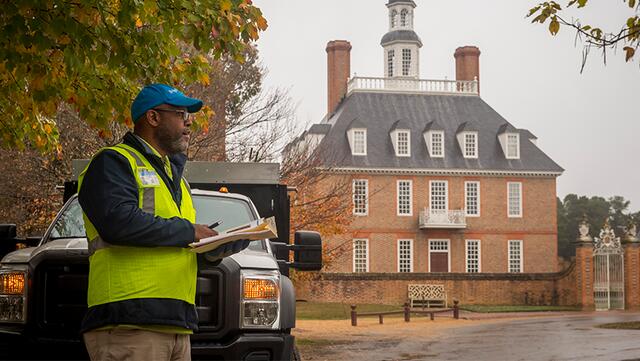
Answers to Frequently Asked Irrigation Questions
Don’t runoff! Our expert has the answers to some of the most common irrigation questions.
It’s time to shake off the winter frost and turn on the irrigation systems. Spring is here! To kick-off the season right, we’ve asked our irrigation experts to tackle four of the most common irrigation questions.
I’ve heard of smart controllers. What is the biggest benefit to upgrading to a smart irrigation system?
The biggest benefit of a smart irrigation system is that you save time and money. Smart irrigation systems optimize your sprinkler run time so you’re watering at the right time of day and for the right duration under current conditions. When you overwater, you’re not only flushing a precious resource down the drain, you’re literally flushing money down the drain. Plus, it can damage your plants by encouraging disease.
Smart irrigation saves you time in that you no longer have to make manual adjustments to your irrigation system to account for Mother Nature’s unpredictability. For example, who wants to jump out of bed to turn off the sprinkler system in the early morning because it’s running during a storm? Not me!
And finally, I think one of the most overlooked benefits of a smart irrigation system is its ability to shut itself down immediately when a leak is detected. That’s a very valuable feature to have in place, which can guard against a costly water bill and repairs.
My area gets plenty of rain. Does my property really need an irrigation system?
I hate to break it you, but you still need an irrigation system. There are a couple reasons why.
First, rain is never a guarantee. Even areas known to have rainy climates experience dry periods. We simply can’t count on rainfall totals each year to be adequate enough to fully meet your landscape’s water needs. Most plants require approximately 1 inch of water per week. Unless you receive at least that much each week like clockwork, chances are you need to irrigate.
The second reason you need an irrigation system is because it supports hydrozoning. Hydrozoning means grouping plants with similar water needs together, so that irrigation zones can be adjusted accordingly. This not only enables a healthy landscape and good aesthetics, it also can save you money. Remember how I said most plants require approximately 1 inch of water per week? While this is a still a good rule of thumb, especially for turf, there may be some plants in your landscape that require less water. There’s no sense in overwatering them, especially when it’s a clear opportunity to save money.
When is the best time—fall or winter—to turn off my irrigation system?
Here’s the easy answer—before the first freeze.
Now here’s the more complicated answer. In some parts of the country the first freeze can come as early as October, while others might not experience it until January. For my clients in New Jersey and Southeast Pennsylvania, we generally try to winterize by the first or second week of November.
So how do you time it right? The Old Farmer’s Almanac is a great resource. Their website, almanac.com, can tell you the average date of the first fall frost and last spring frost for your zip code. This will give you an idea of the right window for success. Your landscape partner should also be keeping tabs on historical averages and the current forecast, so lean on their expertise. Ask them to proactively pencil in winterizing your irrigation system during the window they recommend.
How do I choose the irrigation system that is right for my property?
There are a few major factors that will help you determine what irrigation system would be right for your property. Specifically, you’ll want to consider your plant material, slope, and any water restrictions or laws. Let’s break that down.
The first consideration is your property’s plant material. Earlier we talked about how different types of plant material have different water needs. As a result, your irrigation system can’t be a one-size-fits-all solution; it should be designed with the right products to meet all of your landscape’s varying water needs. For example, your lawn will require sprinklers, but perennials or ornamentals in your beds will do just fine with drip irrigation.
Slope comes into play when your property has elevation changes that affect drainage. If not addressed properly, some plants will receive too much water, while others won’t get enough; worse, you could have much larger problems like flooding or erosion. Appropriate sprinkler spacing, plus solutions like controllers, pressure regulating devices, and specialized nozzles can help. Your landscape pro can guide you to the right mix for your property.
Finally, you’ll need to consider how any local water restrictions or laws might affect your options. For example, some municipalities restrict watering with an irrigation system to once a week, but allow drip irrigation any day between certain hours. Check with your local water authority, or ask your landscape partner, to stay abreast of current restrictions. Be sure to also ask about any available rebates that could help offset the cost of your irrigation system. Many local water authorities offer them to incentivize conservation.
Water Management Made Easy
Make it easy to find the water-saving solutions that are right for your property and budget. Plus, get professional advice on ways to reduce waste, recoup costs through savings, and take advantage of rebates where available.




